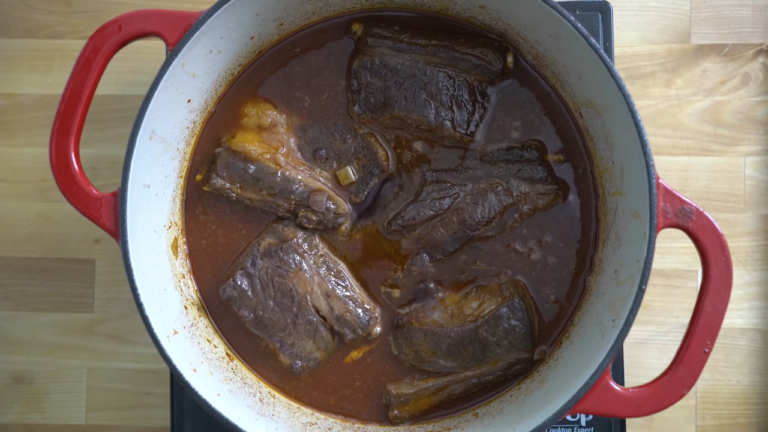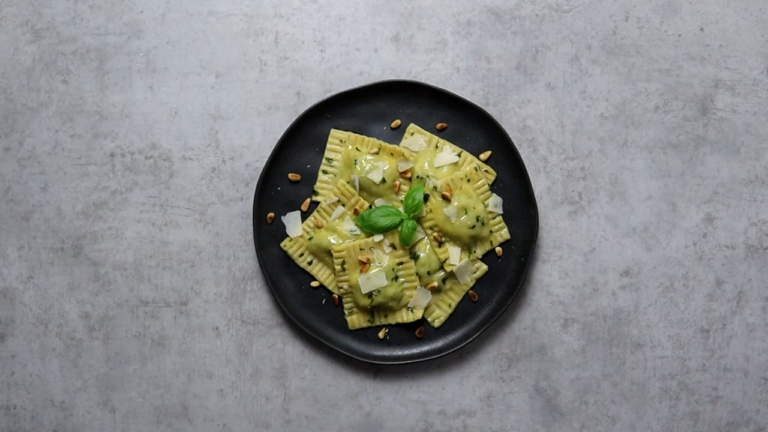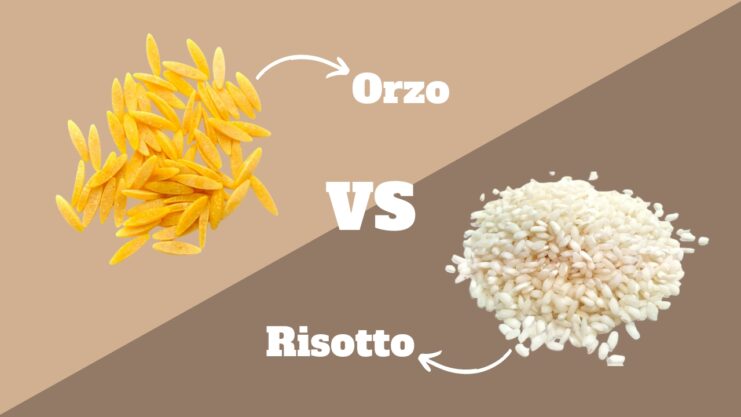When we talk about delicious comfort food, two dishes stand out in Italian cuisine: orzo and risotto. Both have their unique charms and complexities.
In this post, I will discuss what sets these two apart and why they’re both beloved in kitchens around the world.
Key Highlights
- Orzo is pasta shaped like rice, versatile in salads and soups, while risotto is a creamy rice dish, requiring patient stirring.
- Both orzo and risotto can be adapted to various cuisines and dietary needs, including gluten-free and vegan options.
- Seasonal ingredients can transform orzo and risotto into dishes suitable for any time of the year.
Let’s Start With Orzo…
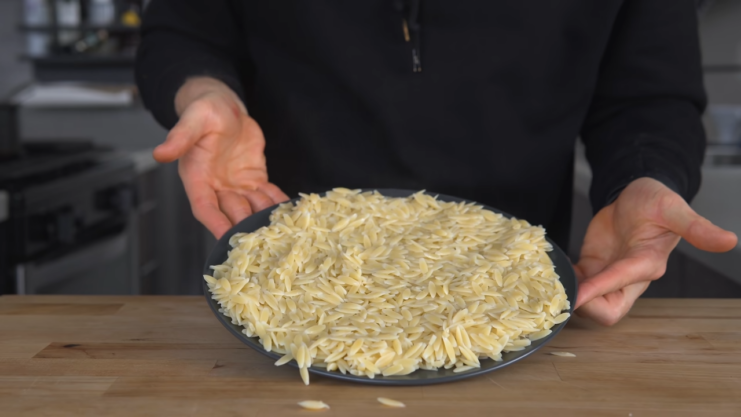
Orzo looks a lot like long-grain rice, but it’s actually pasta. Originating from Italy, this tiny, rice-shaped ingredient is created from durum wheat semolina.
This gives orzo a delightful texture and flavor that can be cooked to different levels of tenderness, which further adds to its versatility in the kitchen. From a bit chewy (al dente) to nice and soft, orzo can always adapt to your taste, and I really love to use it in different dishes.
How Is It Prepared?
Cooking orzo is straightforward. I love to just boil it in salted water until it’s as tender as I like. But there’s more than one way to enjoy orzo.
You can boil, toast, cook it risotto-style, or even bake it. It’s highly versatile, and you can find it in different Mediterranean and Middle Eastern cuisines.
What About Risotto?
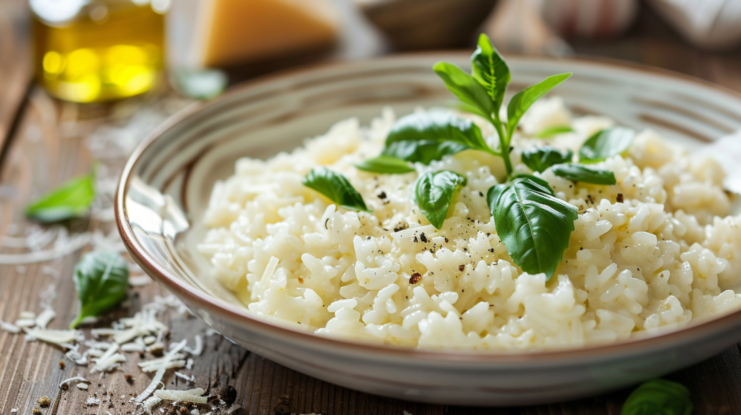
Risotto uses a special kind of rice called Arborio. This rice gets all creamy and delicious when you cook it a certain way.
For risotto, you use a broth instead of just water. You add it to the rice a little at a time and stir a lot to get the best results. It is different than regular rice – it gets really thick and creamy instead of hard when it’s done cooking. The stirring helps the rice soak up that broth, so it isn’t runny or dry.
I like to take my time cooking it so that rice really soaks everything up. That’s what gives risotto that awesome texture. It gets so silky smooth that it’s like eating a cloud. The Arborio rice works perfectly for that because of how starchy it is.
Cooking Techniques
Patience is key with risotto. The process involves sautéing onions and rice, then slowly adding broth while you stir, stir, stir. This process results in a dish that’s creamy, comforting, and utterly delicious.
I usually go for recipes that often include butter, yellow onion, white wine, and Parmesan cheese, not to mention a variety of other ingredients like mushrooms and asparagus to improve the flavor.
The key to a good risotto is the constant stirring during cooking, which helps release the starches and create a smooth, creamy consistency.
Key Differences Between Orzo and Risotto
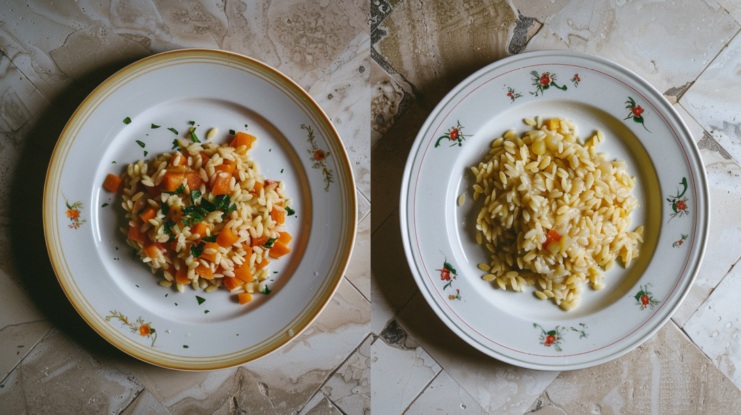
- Ingredients: Orzo is pasta made from wheat, while risotto uses Arborio rice.
- Cooking Method: Orzo is boiled, but risotto requires a slow, careful process of adding liquid and constant stirring.
- Texture: Orzo offers a firmer bite; risotto is creamy and velvety.
- Versatility: Both can be flavored with a wide range of ingredients, but they each bring a distinct texture and preparation style to the table.
Nutritional Comparison
- Fiber Content: Orzo, especially if made from whole grains, typically packs more fiber, which is great for digestion and heart health.
- Gluten-Free Options: While traditional orzo contains gluten, gluten-free versions are available. Risotto, on the other hand, is naturally gluten-free.
- Nutritional Value: Both dishes can be nutritious, especially when loaded with vegetables and herbs.
Culinary Traditions and Adaptations
Orzo in Global Cuisines
Orzo, while Italian in origin, has found a home in various cuisines around the globe. It’s incredibly adaptable, easily taking on the flavors of the ingredients it’s paired with.
In Mediterranean dishes, orzo is often mixed with vibrant vegetables, feta cheese, and olives, creating refreshing salads or warm, comforting pilafs.
Middle Eastern recipes might blend orzo with spices like cinnamon and cumin for a unique and aromatic flavor profile.
Risotto’s Regional Variations
Risotto is a testament to Italian regional cooking, with each area of Italy putting its own spin on this classic dish. The Lombardy region, for example, is known for its saffron-infused Risotto alla Milanese, while the Piedmont region might offer a Risotto al Barolo, cooking the rice in the rich, red wine of the same name.
Seafood risottos are popular along the Italian coastlines, incorporating fresh catches of the day.
Despite common beliefs, risotto isn’t as fussy to make as it’s perceived. It’s quite approachable and adaptable, and you can even make it without wine.
Seasonal Variations
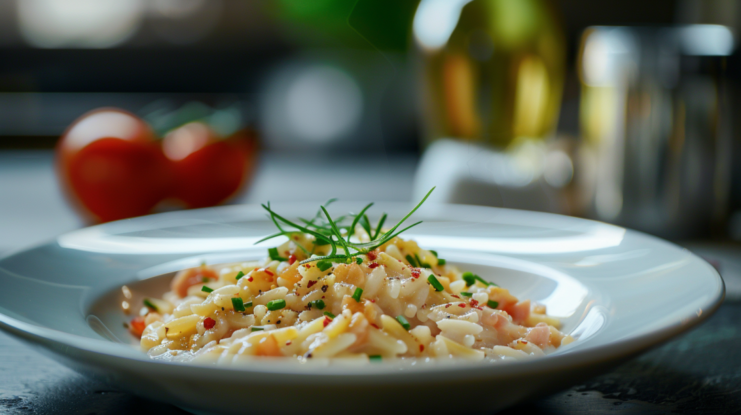
Spring and Summer
During the warmer months, orzo shines in light salads and cold dishes. Imagine a zesty orzo salad with lemon, cucumber, tomatoes, and a hint of mint — perfect for a picnic or a refreshing side dish.
Risotto, on the other hand, can be adapted to the season by incorporating spring vegetables such as peas, asparagus, and fresh herbs, creating a dish that’s both comforting and bright.
Fall and Winter
As the seasons change, so do the flavors of our favorite dishes. Orzo can be transformed into a warm, baked casserole with roasted root vegetables and a sprinkle of Cotija cheese, offering a comforting meal as the weather cools.
Cotija cheese substitutes like feta or Parmesan can also provide a delightful twist to this dish.
Risotto becomes even more indulgent with additions like pumpkin, wild mushrooms, and truffle oil, making it a luxurious centerpiece for any winter dinner party.
Final Words
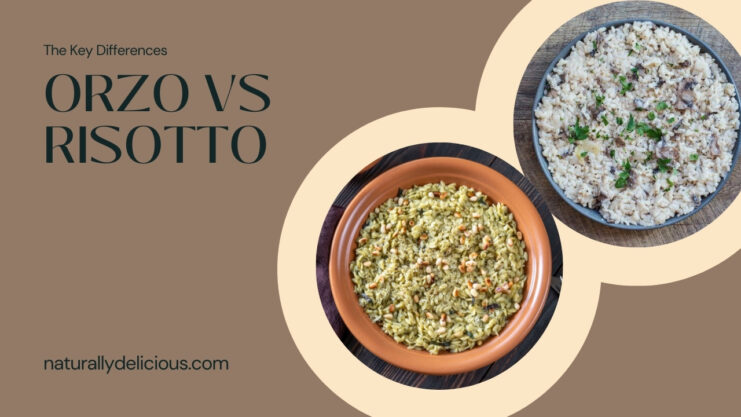
Orzo and risotto are like the dynamic duo of Italian cooking. Orzo is super flexible, a real weeknight hero that you can whip up in no time, and it’ll happily mingle with whatever flavors you throw at it.
Risotto, on the other hand, is like that indulgent treat that asks you to take it slow, stirring patiently until it turns into this dreamy, creamy dish that’s totally worth the wait.
So, whether you’re in a rush and need a quick pasta fix with orzo or you’re feeling fancy and have time to pamper some risotto, both are fantastic ways to get a taste of Italy right there in your kitchen. Buon appetito!




